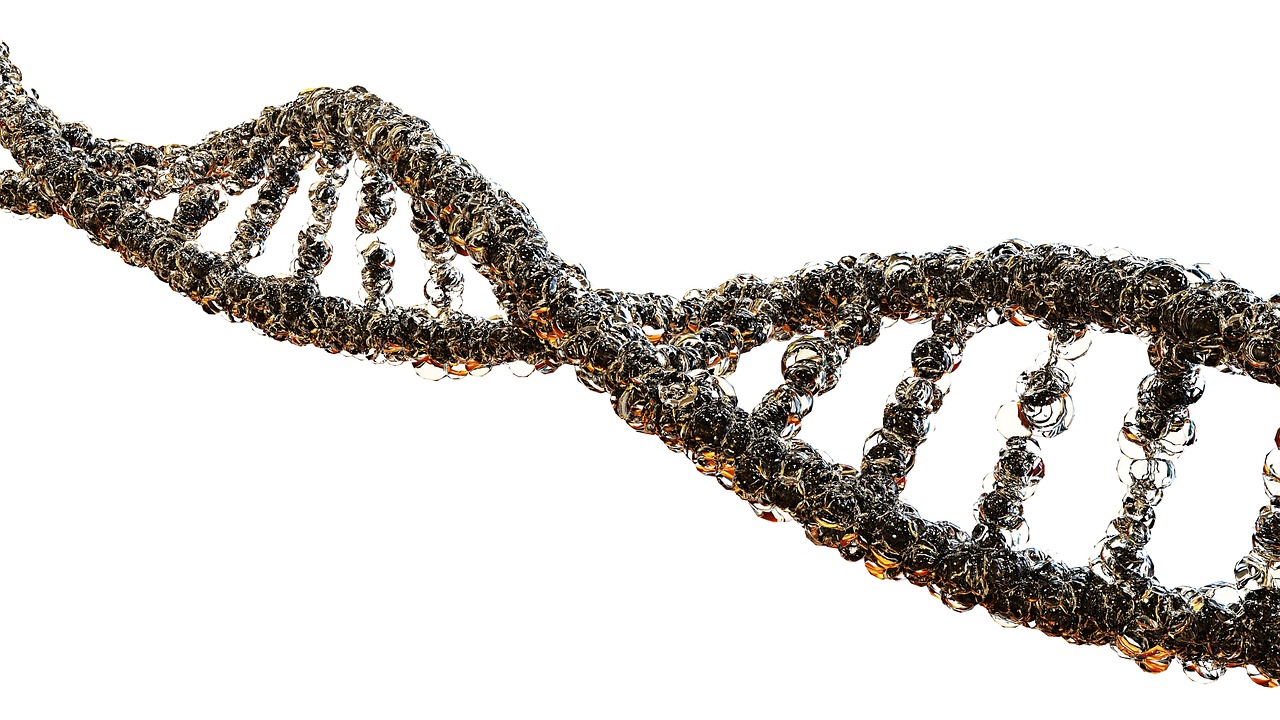Our most basic unit of life - Cells contains what is popularly known as DNA(Deoxyribonucleic acid) organized on chromosomes. When we unravel a chromosome, it is basically just a long string of DNA which contains instructions for the features that makes you who you are.

A gene is a single unique set of instructions. Genes dictate eye color as well as the type of hair you will have, straight or curly, and its color. There's even some research that suggests certain genes may have a role in musical ability.
The genes are the same for everyone. You have the same DNA as every other person on the earth, with only a few exceptions related to gender differences. DNA appear in multiple variants, which is why you are unique and why people differ from one another even if they have the same DNA.
An allele is a particular variation of a gene. For instance, the color of your eyes is determined by several genes. You would only have one eye color if you carried one pair of those genes' alleles. But in the event where you have different allele for those same genes you would have a different eye color. Although everyone's eye color is determined by the same genes, each person's version of those genes results in unique traits.
In human cells, there are 23 pairs of chromosomes, or 46 chromosomes overall. Their mother gives them 23 chromosomes, while their father gives them 23. Every individual receives two sets of chromosomes, one from each parent, which implies that when reproductive cells develop, they receive two copies of every gene.
For instance, some parent cells with 46 chromosomes develop into egg cells, which then proliferate to become reproductive cells. Each sperm cell and each egg cell has twenty-three chromosomes together. in order for them to merge and form a new cell. When the new cell splits and grows into a new person, it contains the appropriate amount of chromosomes.
The specific chromosome that will be passed on is random when the parents make reproductive cells. Keep in mind that each gene on a chromosome contains two copies, one of which is randomly handed on to the offspring. To get an idea of what this may entail, let's look at the inheritance of a particular feature, practically speaking.
The lungs and digestive tract of people with cystic fibrosis, a hereditary illness, create copious amounts of sticky mucus. Also Lung infections and digestive issues comes from this situation.
The majority of people express a variant or allele of the gene that codes for cystic fibrosis, which means they do not have the disease. This gene is located on chromosome seven.
Remember that, like other chromosomes, a kid will inherit two copies of chromosome seven—one from each parent—and that this means the infant will inherit two copies of the cystic fibrosis gene.
Now, let's look closely at this gene in a person's cells, using some symbols. We commonly use letters, so we'll use "F" for fibrosis. Uppercase "F" stands for the normal gene version, and lowercase "f" stands for the gene version causing cystic fibrosis. Typically, people have two normal gene copies. So, whichever copy each parent passes on, the baby will end up with two normal gene copies.
FF - No Cystic Fibrosis
ff - Cystic Fibrosis
Ff
fF
What then does these combos mean for the baby? Remember that the uppercase letter "F" stands for "normal" or "not having cystic fibrosis." Should the infant by chance acquire this combination(FF), cystic fibrosis would not develop. The newborn would have cystic fibrosis if they inherited this combination(FF).
However, what would happen if a kid received both alleles (f and F)? Here, there are only two possible outcomes: either the infant has cystic fibrosis or they do not.
Which one is it then?
This gene, like many others, has two versions, one of which is somewhat stronger than the other. Given that alleles lack muscles, the term "stronger" is hardly one that scientists would use to describe them. Actually, we describe an allele as "dominant" over another and the other one is "recessive".
A person who inherits both the recessive and the "dominant" gene will only express or have any impact from the dominant gene.
Thanks for reading! Hope you learned something?
Reference:
https://www.mayoclinic.org/diseases-conditions/cystic-fibrosis/symptoms-causes/syc-20353700
https://my.clevelandclinic.org/health/diseases/9358-cystic-fibrosis
https://www.britannica.com/science/genetics
https://www.nhlbi.nih.gov/health/cystic-fibrosis/causes#:~:text=Cystic%20fibrosis%20is%20an%20inherited,parent)%20will%20have%20cystic%20fibrosis.